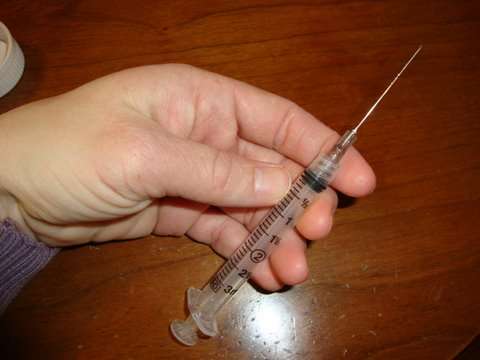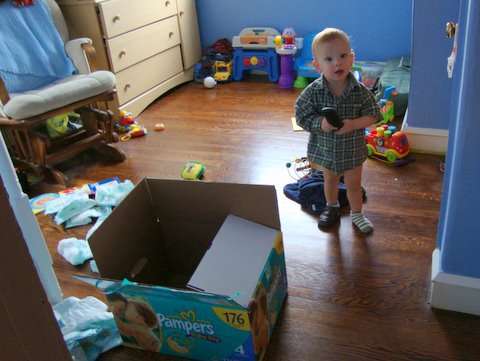My son was born premature at 32 weeks, so my current pregnancy was considered high risk from the start, based on my history. Six months ago, my ob recommended weekly shots of 17p alpha-hydroxyprogesterone between weeks 20 – 36 of my pregnancy.
When we began discussing my options, a weekly appointment just to get my shot did not seem feasible: driving an hour or more each week, waiting, getting the shot, finding babysitting every week (and it had to be the same day each week). Of course, I wanted the shots, for the sake of our child. I was willing to do almost anything to avoid having another NICU baby, another baby coming home on the apnea/brady monitor, the endless possibilities of health problems for a premature child.
So we explored alternatives: the most viable one seemed to be the “do-it-yourself” way–ordering the shots from an online pharmacy with my husband administering them at home.
At the time, just the thought of my husband administering these shots gave me chills.
When we got married, our vows included the “in sickness and in health” line. But while you’re standing at the altar, that line seems so understood–even innocuous. (I mean, we all get colds, right? and let me tell you, I’ll be there for you.) You’re not reading between the lines, thinking, ‘in giving [or receiving] weekly shots for several months of pregnancy and bedrest.’
My husband loves me. And I knew he would do the very best he could while giving me my shots. But he’s not at all the medical type. He was repulsed by the doctor’s suggestion that he cut the umbilical cord (‘That’s why we pay you the big bucks!’ my husband replied) and he had no interest in “observing” the baby’s birth in any way whatsoever, except to hold the child–after a thorough bath.
Having experienced various pain levels while receiving shots, I assumed that smoothly administering shots–especially shots that were “thick” enough they have to be administered in your rear end–required years of medical training and experience.
So it was with a bit of trepidation that we had a home health care nurse come out to show him how it was done for the first two weeks. After that, he’s been on his own.
To my great surprise (and even delight!), my husband does a better job administering the shots than the home health care nurse! It’s been less painful–and not even as messy.
During four months of shots, I have. . .
- Had about three months of contractions (frequently 3-5 minutes apart especially during the night).
- Significantly reduced my activity (grocery shopping, carrying laundry, lifting the kids, “outings”) in order to avoid bedrest.
- Spent four days in the hospital during week 29, attempting to bring my contractions down to a reasonable level.
- Made several trips to Labor and Delivery Triage with contractions 5 minutes apart (or less).
- Been taking procardia (nifedipine) for about a month and a half.
- Had a shot of terbutaline, which was a huge success in reducing contractions that were 2-3 minutes apart down to only a handful per hour.
- Spent about a month and a half on bedrest.
With all of this contraction “activity,” I never imagined that I would still be pregnant at week 36. I never would have believed that my husband would have the chance to give me all 17 shots.
But here we are–17 shots later.
My last shot was earlier this week. We don’t need this stuff any more! As my 3-year-old daughter told someone today, “Mommy’s p’gesterone shots are all gone now!”
And next week, I will be 37 weeks–full-term!
It worked! It wasn’t easy, and it may have been the combination of progesterone, procardia, bedrest, terbutaline. . . but we don’t have a preemie this time around!
So my little girl will be one more success story, speaking to the effectiveness of progesterone shots in reducing premature births!
This Works for Me!




